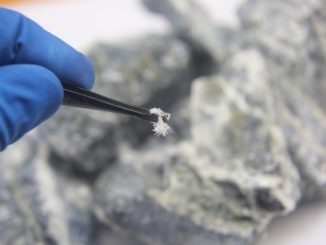
Asbestos is an ongoing issue for a lot of schools, and will continue to be so for many years, so it’s worth keeping up to date with the latest guidance
The legacy of asbestos is one which continues to cause issues within public buildings – schools included. It was widely used until the 1970s, at which point health concerns were fully realised and understood by the public, and so it was phased out – but many school buildings are older than this and may still contain this dangerous product.
Asbestos still kills around 5,000 workers each year, which is more than the number of people killed on the roads. When materials that contain asbestos are disturbed or damaged, fibres are released into the air; if these fibres are inhaled they can cause serious diseases.
These diseases will not affect you immediately – they tend to take a long time to develop – but, once diagnosed, it is often too late to do anything. This is why it is important that you protect yourself now. Asbestos can cause a number of health conditions:
- Mesothelioma is a cancer which affects the lining of the lungs (pleura) and the lining surrounding the lower digestive tract (peritoneum). It is almost exclusively related to asbestos exposure and, by the time it is diagnosed, it is almost always fatal.
- Asbestos-related lung cancer is looks the same as lung cancer caused by smoking and other causes. It is estimated that there is around one lung cancer for every mesothelioma death.
- Asbestosis is a serious scarring condition of the lung that normally occurs after heavy exposure to asbestos over many years. This condition can cause progressive shortness of breath and in severe cases can be fatal.
- Pleural thickening is generally a problem that happens after heavy asbestos exposure. The lining of the lung (pleura) thickens and swells. If this gets worse the lung itself can be squeezed, and can cause shortness of breath and discomfort in the chest.
Asbestos can be found in any industrial or residential building built or refurbished before the year 2000. It can be found in the following places:
Inside
- Sprayed coatings on ceilings, walls, beams and columns.
- Asbestos cement water tanks.
- Loose fill insulation.
- Lagging on boilers and pipes.
- AIB ceiling tiles.
- Toilet seats and cisterns.
- AIB partition walls.
- AIB panels in fire doors.
- Asbestos rope seals, gaskets and paper.
- Vinyl floor tiles.
- AIB around boilers.
- Textiles – eg. fire blankets.
- Textured decorating coatings on walls and ceilings, for example, artex.
Outside
- Asbestos cement roofs.
- Asbestos cement panels.
- Asbestos cement gutters and downpipes.
- Soffits – AIB or asbestos cement.
- Asbestos cement flues.
Contractors who may be working at the school or college are required to have procedures to deal with any unexpected release of, or exposure to, asbestos. Schools and colleges must have similar arrangements, because exposure to asbestos can result from everyday school or college activities or accidents, such as the collapse of an asbestos ceiling. If something goes wrong and you find that there has been, or may have been, an unplanned disturbance of asbestos you should:
- stop any activity in the affected area immediately;
- remove everyone from the affected area and do not remove any items from the area as the spread of asbestos can occur through contaminated clothing or possessions;
- prevent access to the area until any necessary remedial action has been taken;
- seek immediate expert advice regarding necessary remedial action to be taken – there may be a need to decontaminate individuals or areas exposed to asbestos.
Certain incidents which may have resulted in the release of asbestos fibres should be reported to the HSE. Where relevant, this is a legal requirement under the Reporting of Injuries, Diseases and Dangerous Occurrences Regulations 2013 (RIDDOR). If you are unsure whether the regulations apply, seek professional advice or contact the HSE.
Staff, pupils, students and their parents or carers should be given relevant information to help them understand the risks and should be advised to consult their doctor.





Be the first to comment